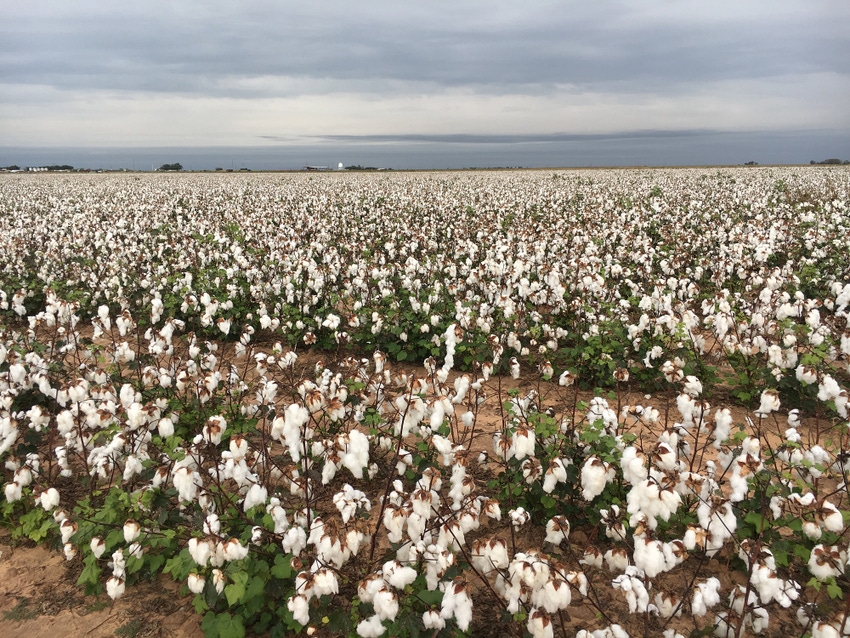October 18, 2016

“Better than expected,” that’s the cautiously optimistic outlook for the 2016 cotton crop in the Texas Rolling and High Plains, the state’s main production regions.
Late-summer rains improved conditions for cotton in those regions and likely mean an above-average crop for 2016, according to Texas A&M AgriLife Extension Service experts.
Dr. Seth Byrd, AgriLife Extension cotton agronomist, Lubbock, said cotton harvests began in the regions on a small scale a few weeks ago but should ramp up soon.
“Producers had low expectations for dryland fields because of a hot, dry July, but they seem happy with where the crop is at this point,” he said.
Byrd said leaf grades, which are determined by the amount of plant material left in lint, was a big issue last year. With about 4,000 bales ginned, Byrd said this year’s small sampling of cotton showed leaf grades in the 2 to 3 range.
“It’s pretty clean cotton so far,” he said.
Dr. Gaylon Morgan, AgriLife Extension state cotton specialist, College Station, visited the Rolling Plains last week and says, overall, fields represented “one of the better crops they’ve had in quite some time.
“They caught some more timely rains than previous years and the dryland crop looks like it could be 25 percent better than average, especially in the Northern Rolling Plains.”
Not enough cotton had been harvested to give a good indication about fiber quality, Morgan says.
He mentioned issues with weather, pests and diseases. Hail storms led to substantial damage for isolated fields, and stink bugs surprised producers by the amount of damage they caused in some areas. Bacterial blight also affected production in some of the northern tier counties of the Rolling Plains.
For the latest on southwest agriculture, please check out Southwest Farm Press Daily and receive the latest news right to your inbox.
Byrd and Morgan say irrigated fields look very good and the rainfall also reduced irrigation costs. Morgan estimates 10 percent to 15 percent of dryland fields are defoliated, while irrigated and late–planted fields still have a significant number of green bolls.
Temperatures were at or above 90 degrees and were expected to remain there for a while before cooler temperatures return. Fields in the Rolling Plains were planted later than usual due to late May rains, and fields in the High Plains, which are typically harvested late, could be later than usual also.
There remains some concern of frost for some late maturing cotton, Byrd says.
“They’ll be up against a freeze at some point, but weather the past two weeks and the forecast for the near future is perfect for maturing cotton.”
You May Also Like




